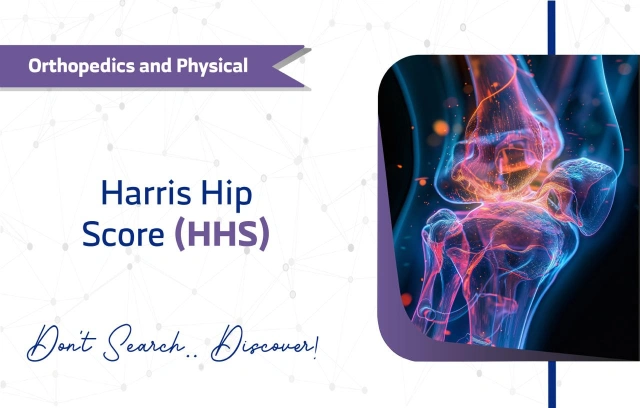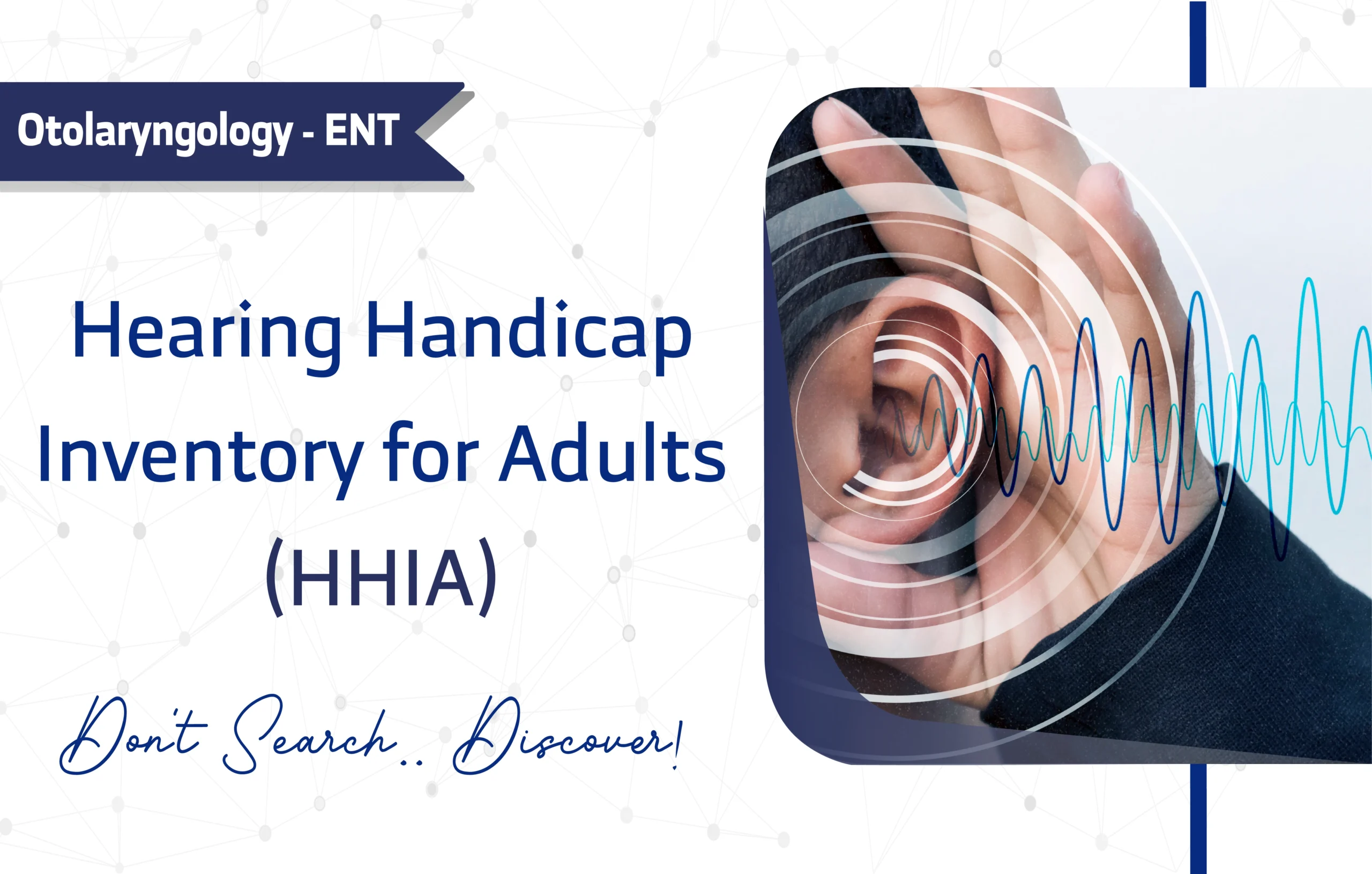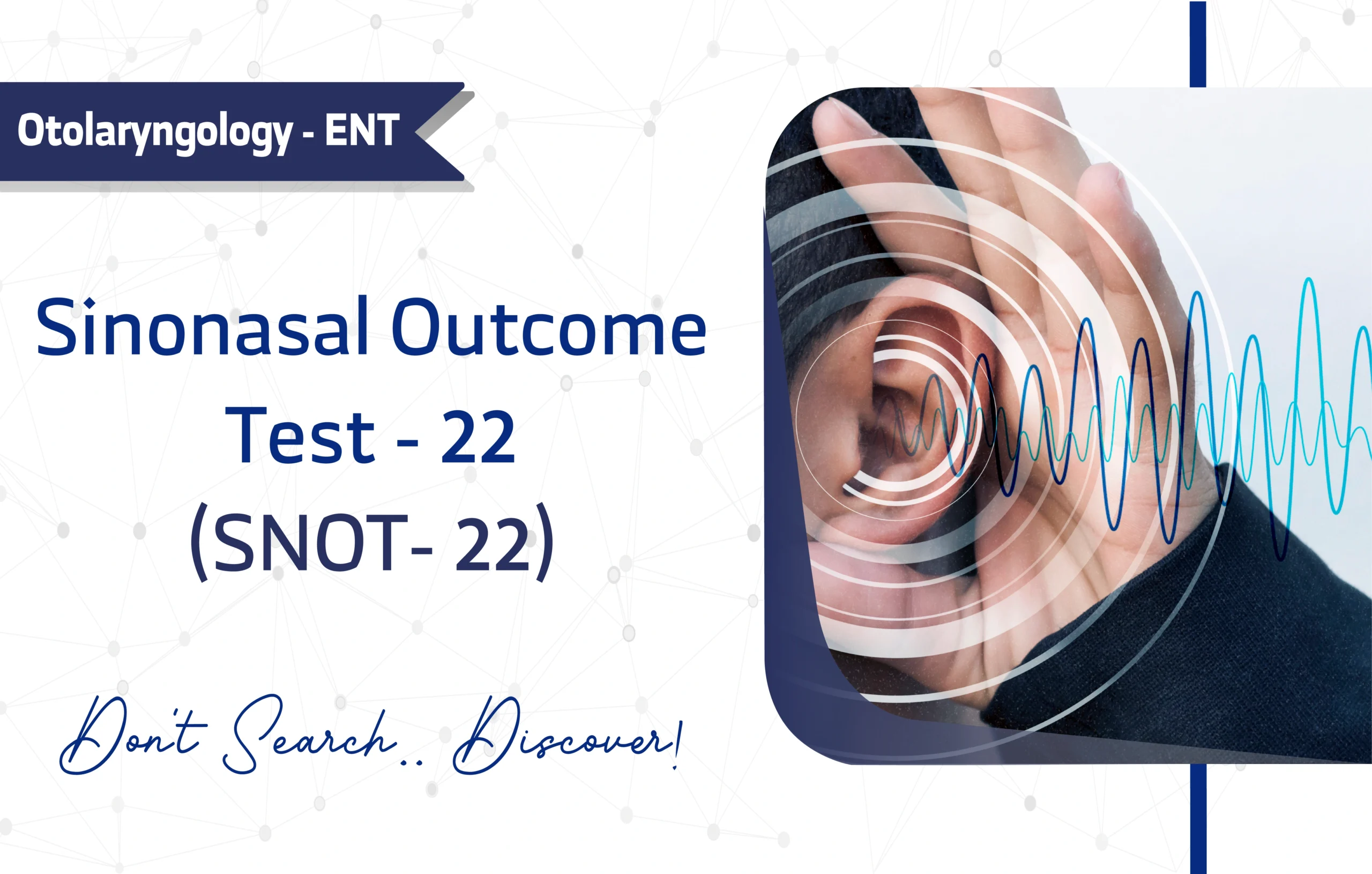Introduction
The Harris Hip Score (HHS), developed by William H. Harris in 1969, is a cornerstone in orthopedic surgery for evaluating hip function and patient outcomes. With over 10,000 citations on Google Scholar, its enduring relevance is evident in clinical and research settings. Consequently, this concise tool helps clinicians assess hip-related disability and guides researchers in studying surgical interventions.
This article explores the HHS’s structure, validation, and applications, providing actionable insights for orthopedic specialists and researchers. Specifically, we cover its key features, scoring, clinical utility, and limitations, ensuring experts have a robust resource for enhancing patient care and advancing research.
Key Features of the Harris Hip Score
Purpose and Use of the Harris Hip Score
The HHS is designed to assess hip function, particularly in patients undergoing hip surgery, such as total hip arthroplasty. Clinicians use it to evaluate various hip disabilities and methods of treatment, while researchers rely on it for clinical trials and outcome studies. For example, its focus on hip-specific metrics makes it invaluable for tailoring post-surgical rehabilitation plans. As a result, it remains a gold standard in orthopedic assessments.
Target Population
The HHS targets adults aged 18 and older, including:
- Young Adults (18–24 years)
- Middle-Aged Adults (25–44 years)
- Older Adults (45–64 years)
- Seniors (65+ years)
It is primarily used for patients with hip conditions like osteoarthritis or post-surgical recovery. However, its validation is limited for pediatric populations, restricting its use in adolescents.
Structure
The HHS comprises 10 items within the orthopedic surgery domain, covering four sub-domains:
- Pain: Measures severity and its impact on activities and medication use.
- Function: Assesses daily activities (e.g., stair use, public transport, sitting, managing shoes/socks) and gait (presence of a limp, support needed, walking distance).
- Absence of Deformity: Evaluates hip flexion, adduction, internal rotation, and leg length discrepancy.
- Range of Motion: Measures hip flexion, abduction, external/internal rotation, and adduction.
Eight patient-reported items (regarding pain and functional capacity) and two clinician-assessed items (regarding absence of deformity and range of motion) ensure a comprehensive evaluation. Each item uses a unique numerical scale with descriptive response options.
Scoring Method of the Harris Hip Score
The HHS employs a complex scoring system, with a maximum of 100 points. Patients select 1 of 2–6 response options for each of the 8 items, while clinicians measure several clinical parameters for the remaining 2 items. Each item uses a unique numerical scale corresponding to descriptive response options. The number of response options and the points assigned to each vary by item.
The scoring is distributed as follows:
- Pain: Maximum of 44 points, assessing severity and impact on daily life.
- Function: Maximum of 47 points, subdivided into:
- Activities of Daily Living: 14 points, covering tasks like dressing and sitting.
- Gait: 33 points, evaluating walking and stair climbing.
- Range of Motion: Maximum of 5 points, measuring hip mobility.
- Deformity: Maximum of 4 points, assessing hip alignment.
For range of motion, the range of motion item includes 6 motions, each graded based on the arc of motion possible. Each range of motion gradation is assigned an index factor and a maximum possible value, which are used to calculate arc of motion points. These points are added and multiplied by 0.05 to receive the total points for range of motion. The final score is calculated by summing the scores for the 4 domains.
The higher the HHS, the less dysfunction, indicating better hip function. Clinicians interpret scores as:
- 90–100: Excellent
- 80–89: Good
- 70–79: Fair
- <70: Poor
For instance, a score of 85 might indicate a successful hip replacement, while a score below 70 could signal the need for further intervention. Therefore, the clear cut-off scores simplify clinical decision-making and research analysis.
Administration Format and Time
The HHS supports multiple administration formats, including:
- Paper-based forms
- Digital (online) platforms
- In-person interviews
However, range of motion and deformity assessments require a clinical visit, necessitating a qualified healthcare professional, such as a physician or physical therapist. The HSS takes less than 5 minutes to complete.
Applications of the Harris Hip Score
The HHS serves multiple roles in orthopedic practice and research:
- Monitoring: Tracks recovery progress after hip surgery, such as arthroplasty or fracture repair.
- Treatment Planning: Informs rehabilitation strategies based on HHS scores, prioritizing severe cases.
- Research: Facilitates outcome comparisons in clinical trials, advancing evidence-based orthopedics.
For instance, a clinician might use a score of 65 to adjust physical therapy, while researchers analyze trends in hip function across patient cohorts. Consequently, the HHS bridges clinical care and scientific inquiry effectively.
Languages and Availability
The HHS is available in multiple languages to support global clinical and research applications, including:
- English
- Arabic
- German
- Portuguese
- French
- Italian
As well as Persian, Slovenian, and Turkish. This multilingual accessibility enhances its utility in diverse orthopedic settings worldwide.
Reliability and Validity
The HHS demonstrates high reliability and validity. Validation studies confirm its sensitivity to changes in hip function, making it a trusted tool for monitoring surgical outcomes. Moreover, its robust psychometric properties have been tested across diverse populations, ensuring applicability in various clinical contexts. For example, its ability to detect functional improvements post-arthroplasty makes it a staple in orthopedic research.
- Traumatic Arthritis of the Hip after Dislocation and Acetabular Fractures: Treatment by Mold Arthroplasty: study link.
- Is the Harris hip score system useful to study the outcome of total hip replacement? Study link.
Limitations and Considerations
Despite its strengths, the HHS has a few limitations:
- Cultural Bias: Responses may vary across cultures due to differing perceptions of pain and function.
- Lack of Sensitivity to Change: May not fully capture subtle improvements or declines in hip function over time.
- Scoring Complexity: The weighted scoring system can be challenging to calculate and interpret without training.
- Ceiling Effects: High-functioning patients may score maximally, masking minor deficits.
Other Versions and Related Questionnaires
Researchers and clinicians may find it useful to be aware of other questionnaires that are similar or complementary to the HHS, such as:
- OHS: Oxford Hip Score.
- WOMAC: Western Ontario and McMaster Universities Osteoarthritis Index.
- the Hip Outcome Score.
Additionally, other versions of the HHS exist, including:
- mHHS: The Modified Harris Hip Score.
These related instruments provide additional options for researchers across different populations.
Cost and Licensing
The HHS is freely available for non-commercial use, but permission may be required for commercial or funded academic projects.
Additional Resources
For further exploration, consider these resources:
- Original Validation Study: study link
- Another Validation Study: study link
- Questionnaire Access: Download the HHS as a PDF here.
- Further Resources: link
- Access Link: Download the HHS directly from its official source here.
Frequently Asked Questions (FAQ)
- Who can use the HHS?
Orthopedic surgeons, researchers, and healthcare providers use the HHS for adults aged 18 and older with hip conditions. - How long does it take to complete the HHS?
Patients typically complete the HHS in less than 5 minutes, making it practical for clinical settings. - How is the HHS administered?
Healthcare teams can administer the HHS via paper-based, digital formats or in-person interviews offering flexibility in usage. - Is there any cost to using the HHS?
The HHS is free for non-commercial use, but permission may be required for commercial or funded academic projects.
A word from ResRef about the Harris Hip Score
The HHS remains a cornerstone in hip function evaluation, balancing simplicity with clinical relevance. Whether you’re a clinician optimizing patient care or a researcher analyzing surgical outcomes, the HHS provides critical insights for better decision-making. Consequently, it drives improved patient outcomes and advances orthopedic research.
References
- HARRIS, WILLIAM H.. Traumatic Arthritis of the Hip after Dislocation and Acetabular Fractures: Treatment by Mold Arthroplasty: AN END-RESULT STUDY USING A NEW METHOD OF RESULT EVALUATION. The Journal of Bone & Joint Surgery 51(4):p 737-755, June 1969. study link
- Söderman, Peter MD, PhD; Malchau, Henrik MD, PhD. Is the Harris Hip Score System Useful to Study the Outcome of Total Hip Replacement?. Clinical Orthopaedics and Related Research 384():p 189-197, March 2001. Study link.
- Wamper, K. E., Sierevelt, I. N., Poolman, R. W., Bhandari, M., & Haverkamp, D. (2010). The Harris hip score: Do ceiling effects limit its usefulness in orthopedics? Acta Orthopaedica, 81(6), 703–707. doi:10.3109/17453674.2010.537808. Link.
- Nilsdotter A, Bremander A. Measures of hip function and symptoms: Harris Hip Score (HHS), Hip Disability and Osteoarthritis Outcome Score (HOOS), Oxford Hip Score (OHS), Lequesne Index of Severity for Osteoarthritis of the Hip (LISOH), and American Academy of Orthopedic Surgeons (AAOS) Hip and Knee Questionnaire. Arthritis Care Res (Hoboken). 2011 Nov;63 Suppl 11:S200-7. doi: 10.1002/acr.20549. PMID: 22588745. Link.
- Kalairajah Y, Azurza K, Hulme C, Molloy S, Drabu KJ. Health outcome measures in the evaluation of total hip arthroplasties–a comparison between the Harris hip score and the Oxford hip score. J Arthroplasty. 2005 Dec;20(8):1037-41. doi: 10.1016/j.arth.2005.04.017. PMID: 16376260. Link.









2 thoughts on “Harris Hip Score (HHS): A Comprehensive Guide for Orthopedic Assessment”
What’s up to every one, the contents present at this web page are actually awesome for people knowledge, well, keep up the nice work fellows.
I have been browsing on-line more than 3 hours as of late,
yet I never discovered any interesting article like yours.
It is beautiful worth sufficient for me. In my view, if all site owners and bloggers made just right content
as you probably did, the net will likely be a lot more useful than ever before.